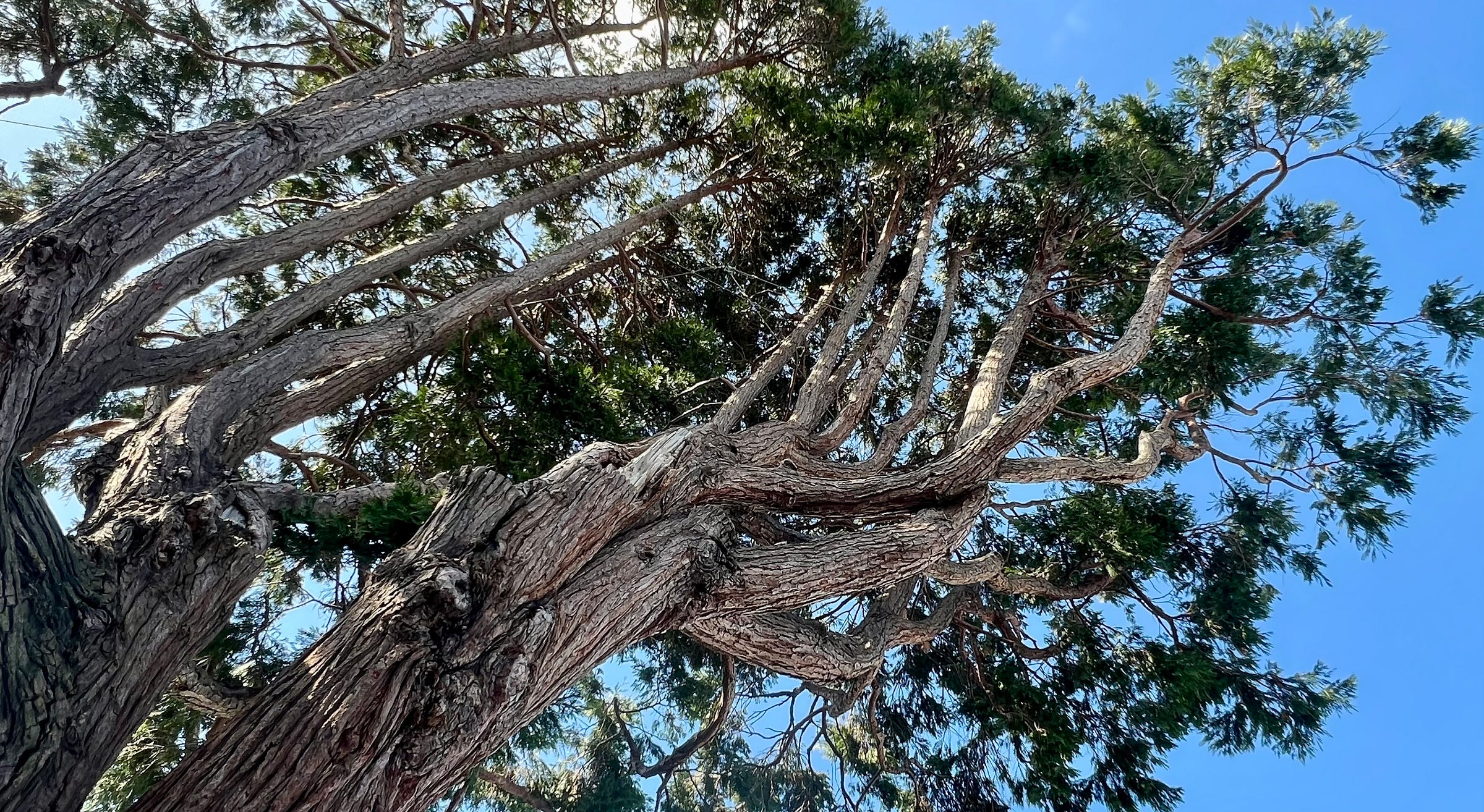Burls as Beautiful, Part 1
The ways a family tree can twirl and spin to create shadows and unexpected growths.
Our guest writer, joins us as part of our first cohort in the Projectkin Members’ Corner. Monthly posts from members celebrate their contributions to family history storytelling — in all its forms. Posts may be written or recorded (audio or video) will be shared for free each month. Explore the entire Members’ Corner here.
Burls
Is your family tree made up of distinct single branches that reach smoothly and elegantly into the sky? Or does it have places where it twirls and spins in ways that create shadows and unexpected growths? Those unexpected growths on a tree may be burls. A burl is created when a tree enfolds (or takes in) undeveloped buds and, from those buds, creates irregular patterns and cracks in the bark of the tree. Often burls are created to heal injuries to the tree. What is inside of the burls, which can grow quite large and look, well, weird, is wood that often spins in unpredictable and beautiful patterns and is coveted by fine woodworkers. Burls grow on perfectly healthy trees.
Your Family Tree & Burls
Now let’s return to your family tree using burls as our metaphor. Burls in a family tree, or injuries to the trees, including undeveloped buds, might be caused by divorce, adoption, an affair, an unexpected pregnancy, remarriage, surrogacy, foster care, and many other messy human events. These times in life can cause injury to our family trees and spin branches off in unanticipated and sometimes unwanted directions. However, the burls they create as our family trees heal may also later reveal great beauty and unexpected gifts.
So is your family tree made up of smooth branches reaching undeterred into the sky? Or is it a beautiful tree with both branches and burls? Despite our hesitance sometimes to talk about them, and despite the general absence of both genealogical and family story frameworks for capturing them, burls are usually the norm in most family trees.
Life is complicated
Let me offer the trees of my family and close friends as examples. In my genealogical work, I have an ancestor who was married five times. His first four wives died; the last one did outlive him. In addition to my mind creating some really interesting stories about how one man had four dead wives, the influence on our family tree and family stories is significant. This is a big burl with a whole set of half siblings and buried family stories on board.
Most genealogy tools give me enough flexibility to add an ancestor with five wives and lots of kids. But what does the family story look like? Honestly, I’m still figuring that out.
Let’s move to adoption, also in my family. Or we could consider surrogacy, sperm or embryo donation, or even my friend who, after she was in her forties, found out she was conceived by rape, which was a closely held family secret. All of these very real circumstances, and others, greatly challenge our thinking about family genealogy and introduce greater complexity than what may be accommodated by our current genealogy tools. For instance, does my daughter’s tree show her biological family or her “real” family via adoption? Does it show both? If both, what does that look like? Using these same examples, but from a family storytelling perspective, how do the related stories get told? How do we manage privacy of the individuals involved while accommodating the facts? What learning is embedded in the burls of our trees that continue to influence those in current and future generations? How do we share difficult stories with others?
Handling Real Life Complications
If you are working on your family tree and/or family stories, you are very likely to encounter burls. The question may become: To reveal or not to reveal. If you choose to reveal, you may find that some will consider what is inside to be beautiful; others will not and may become quite angry about the intrusion into family secrets. Such is the human experience with all of its messiness, surprises, and growth.
I tend to fall on the side of “It is what it is. Embrace the authenticity.” My friend’s experience of finding out she was conceived by rape has further emphasized that stance. As she processed this family secret, and the impact on her identity and her relationships, it reminded me of a favorite quote by Elizabeth Stone:
“The particular human chain we’re part of is central to our individual identity. Even if we loathe our families, in order to know ourselves, we seem to need to know about them, just as prologue. Not to know is to live with some of the disorientation and anxiety of the amnesiac.”
The search for truth and who we are has long been a part of human endeavors. Part of our truths are embedded in the beautiful burls. Accommodating the very real burls is perhaps the next real challenge for genealogists and family story tellers. Is it not?
This article is part of an ongoing series from
. Read part 2 here:“Storying” Burls, Part 2
Our guest writer, Kerri Kearney joins us for a second publication for the Projectkin Members’ Corner. Monthly posts from members celebrate their contributions to family history storytelling — in all its forms. Posts may be written or r…
Do you think you might be interested in joining us here in the Members’ Corner with a piece of your own? We’d love to share your work. Learn more:










It really is a great metaphor to represent something that happens more than we would like. Secrets in families always have a way of coming out. It’s why I really discourage them. Too risky.
I will forever think of those complicated family bunches as burls. In my private database, I hide nothing. In a public database, or article, I try not to publish something that would truly be hurtful to a living person. There is so much to write about that I don't find letting those painful stories "rest" until a later date.